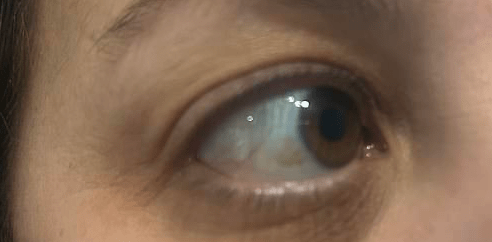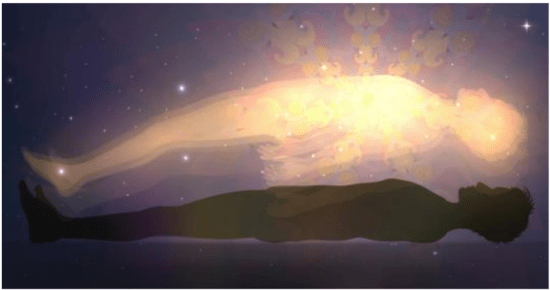Dana Galiano, a 47-year-old resident of New Jersey, experienced a condition known as photokeratitis, which is the medical term for sunburn on the cornea. She developed this condition in both of her eyes during a family beach vacation to Ocean City in July. Dana believes that the sunburns were the cause of her decreased ability to see objects at a close distance.
During the trip, Dana did not wear sunglasses, and upon returning home, she felt a burning sensation in her eyes similar to the feeling of sand being blown into them.

Fortunately, Dana is no longer experiencing pain, and her long-term vision has not been significantly affected. However, she has noticed an increased dependence on her glasses compared to before.
Medical professionals strongly emphasize the importance of wearing sunglasses when outdoors and avoiding direct exposure to sunlight. The sun emits harmful UVA and UVB radiation, which, over time, can contribute to the development of conditions such as cataracts and eyelid cancers. By taking preventive measures, such as wearing sunglasses, individuals can protect their eyes from potential damage caused by prolonged exposure to sunlight.

According to Ms. Galiano’s account given to DailyMail.com, she admitted to not always wearing sunglasses when exposed to the sun. Last summer, after spending a long day at the beach reading a magazine, she began to feel a burning sensation in her eye when she returned home. Initially, she thought it was similar to the feeling of having grains of sand in her eye. Despite rinsing her face with water, there was no redness, but her eye continued to ache.
Ms. Galiano sought her mother’s help and asked her to examine her eyes, wondering if there was any debris causing the discomfort. Surprisingly, nothing was visible, even after rinsing her eye. The pain eventually subsided after a few hours and taking Motrin.
However, she did notice a mark on her right eye that was not present before. Being someone who tends to procrastinate when it comes to check-ups, she chose to ignore it.

After experiencing a similar sensation in her left eye the following weekend, following a day of lounging at the beach, Dana decided to seek medical attention. To her dismay, the doctor informed her that she had suffered a sunburn in her eye, and the damage was permanent. The doctor inquired about her sunglasses usage, and Dana admitted that she occasionally wore them but not consistently.
Dana shared her lifelong habit of not regularly wearing sunglasses while being in the sun. The doctor explained that she had a permanent burn on her eye and stressed the importance of wearing sunglasses consistently. The doctor warned her that if she continued to neglect wearing sunglasses, the condition could worsen and eventually impact her vision. While Dana can currently see the spot on her eye, the doctor cautioned that without proper protection, the spot could enlarge over time, potentially leading to vision impairment.

While Dana is no longer experiencing pain, she has had to acquire glasses to address her farsightedness. It is important to note that photokeratitis typically does not cause long-term vision impairment. Dana acknowledges that her doctors were unable to definitively attribute her increased reliance on glasses to the sunburn in her eyes.
Initially, Dana believed that her vision deterioration was a natural consequence of aging. However, her doctor informed her that the permanent burn on her eye could indeed impact her visual capabilities.
Dana stated, “My doctor didn’t explicitly say that the eye burn is the sole reason for my increased need for stronger glasses. Previously, I only used glasses at night for driving, but now I require them every day for tasks such as computer usage and driving.”
She added, “The damage to my eye is a contributing factor. Any damage or injury to the cornea can impair vision.”
According to Dr. Jeff Dello Russo, an ophthalmologist specializing in laser eye surgery in New York and New Jersey, permanent vision damage due to photokeratitis is rare but not unheard of. He explained that such damage typically occurs over an extended period rather than resulting from a single instance of sun exposure.
According to Dr. Jeff Dello Russo, photokeratitis can often occur without any visible signs apart from redness and irritation of the eyes, which is the most common presentation. The presence of a physical mark, like the one Dana experienced, is less common.
The condition is caused by the sun’s rays reflecting off water, sand, or snow, making it prevalent among winter sports athletes who spend extended periods at high altitudes with thinner air providing less protection against UV rays.
It is challenging to determine the exact prevalence of photokeratitis as it can be mistaken for other eye conditions such as eyestrain, dry eyes, or foreign objects in the eyes. Dr. Dello Russo stated that there is no definitive incidence report on the frequency of the condition.
Dana, having spent much of her life in the sun, including her professional activities as a director at the National Mortgage Insurance Corporation, where she conducts business outdoors on the golf course, has had significant sun exposure.
Other symptoms of photokeratitis include pain and swelling, tearing, blurred vision, eyelid twitching, sensitivity to light, a gritty feeling in the eye, and inflammation of the conjunctiva, the protective mucous membrane of the eye.
Typically, photokeratitis resolves within a couple of days, and permanent damage is rare. However, repeated episodes of photokeratitis over time can increase the risk of long-term eye damage. For example, approximately 10 percent of cataract cases can be attributed to excessive UV ray exposure.
Dana now prioritizes wearing polarized sunglasses and encourages her 15 and 18-year-old daughters to do the same whenever they are exposed to UV rays. She recognizes that her eyes are of utmost importance, stating, “It’s my vision because these are my only eyes.”




